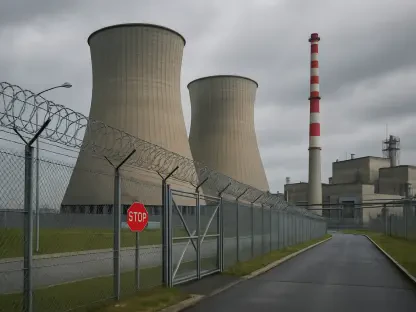In North Korea, the rice planting season presents substantial challenges, prompting the nation to evaluate and regulate power distribution in North Hwanghae province. The task is to ensure that farms have the necessary electricity during this critical period of national mobilization. The government is undertaking an extensive survey to assess power supply effectiveness for newly constructed and expanded residential complexes in the province’s major cities and counties. This survey spans a six-month period that began in December and continues until the conclusion of the current rice transplanting season.
Monitoring Electricity for Crucial Agricultural Activities
Evaluating Power Adequacy
North Korea’s endeavor to assess electricity provision starts with a thorough examination of the structures in the province. Each complex is scrutinized, considering the installation and maintenance costs of the equipment required for efficient power transmission and distribution. By evaluating these factors, authorities hope to manage power allocation effectively to support agricultural activities. These assessments categorize the apartment complexes based on their power transmission load, its peak during evening hours, and the use of electric heaters. The distinction helps identify complexes that exceed the power grid’s capacity by a staggering 132%, leading to frequent tripping of circuit breakers.
Consequently, the transmission department has had to intensively monitor these “unmanageable load zones” as a means to stabilize the grid. To address this, officials have devised a plan categorizing complexes based on their power usage: zones with preapproved power usage, those requiring partial cutbacks, and areas awaiting power shutoff notifications. While 13 of the 42 complexes fall under micromanagement to stabilize power usage, stringent measures include curtailing electric heater and cooking equipment use, ensuring the electricity supply aligns with the grid’s capability.
Enhancements in Power Management
Efforts to enhance power management include recommendations for a more systematic approach to planning. A significant oversight revealed that constructing new apartments often prioritized government timelines over realistic assessments of power loads. Going forward, incorporating power equipment capacity evaluations and data from load simulations has been advised to guide future development projects. Additional strategies recommend installing devices within preapproved zones to automatically cut power at designated times. Dedicated circuits tailored specifically for heating and cooking equipment are also suggested to optimize energy resource allocation.
Random checks on power usage are now being piloted in select areas, primarily as a post-announcement measure following power cutoffs, further marking a shift towards more structured surveillance. While this has faced resistance from some residents, it has proven effective in reducing excessive power use, bolstering the overarching aim of fostering intelligent power regulation. The necessity for such proactive approaches underlines the broader challenge of reconciling burgeoning electricity demands with the existing constraints of North Korea’s power infrastructure.
Strategic Responses to Electricity Management
Addressing Current Challenges
By examining the complexities associated with power use in residential settings, the provincial power transmission department has identified crucial insights into managing electricity needs during the demanding agricultural season. The prioritization of construction over power feasibility reveals the critical need for a balanced approach that considers energy demands from inception. The integration of realistic power load assessments and forward-looking plans is indispensable. Through segmentation into various power usage zones, authorities can address immediate needs and streamline power distribution effectively without severely disrupting residents’ lives.
Building a Sustainable Future
Moving towards a sustainable energy management framework requires North Korea to emphasize the necessity of resourceful planning, particularly with the expansion of residential infrastructures in mind. Potential interventions spotlight the merit of adaptive power management strategies, including installing automation technologies that allow precise control over electricity consumption. Endorsing dedicated circuits for residence-specific high-load appliances ensures a more equitable distribution of available resources alongside enhancing individual accountability in energy consumption habits.
The necessity for continual improvements, such as regularly conducting random power usage checks, helps instill a culture of consciousness around energy use. This adaptive strategy is crucial for preserving reliability in North Korea’s power infrastructure, especially in times of heightened demand such as the rice planting season. Embracing these strategic and sustainable measures will yield a more resilient power management system adept at meeting the challenges posed by North Korea’s evolving lifestyle and agricultural requirements.
Charting a Path Forward
The rice planting season in North Korea poses significant difficulties, compelling the government to scrutinize and adjust electricity distribution in North Hwanghae province. The primary objective is to ensure that farms have adequate electricity during this critical period of national mobilization for rice transplanting. To this end, the government has initiated a comprehensive survey to evaluate the efficacy of power supply to newly built and expanded residential complexes across the province’s major cities and counties. This survey, which spans six months, began in December and will continue through the end of the current rice planting season. These efforts highlight the importance placed on agriculture in the nation, where producing a sufficient food supply is critical. The challenges of the planting season not only demand urgent attention to power distribution but also reflect the wider economic and resource allocation issues in the country. Addressing these energy needs is thus crucial for supporting agricultural productivity and overall stability in the region.









